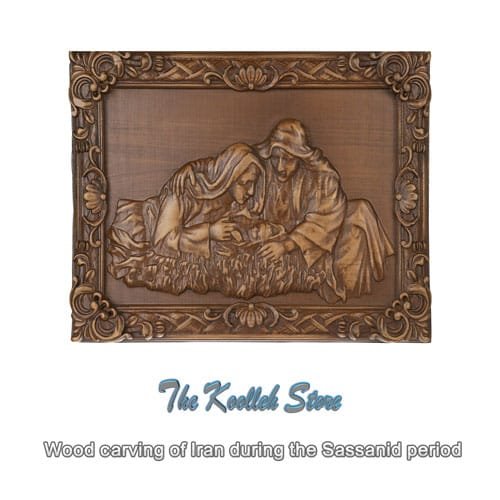Wood carving of Iran during the Sassanid period

The Parthian dynasty became extinct by Ardeshir Babakan. He was the grandson of Sasan, the great Pars and the cleric of the priests of the Anahita Temple of the pool, and he called his dynasty Sassanid. They considered themselves the heirs to the Achaemenid rule and ruled Iran from the third to the seventh century AD, and were the last empire of pre-Islamic Iran.
Sassanid art was inherently a court that always sought to prove its connection with the Achaemenid art tradition. However, at least at the beginning of its existence, this art could not be ineffective in the continuation of the party culture, especially since the art and culture of the party in its later periods had become more and more characteristic of Iran. In fact, the Sassanid art of the final period was one of the great changes in art that began about four thousand years ago in the Mesopotamia and Iran. Henry René Dalmani in the book from Khorasan to Bakhtiari:
In the fourth century AD, the Iranians established relations with the Byzantine people, as they found the court of the Byzantine Empire suitable for the spread of their glorious arts and crafts. It is from this time that the artisans of the Byzantine Empire expressed interest in the arts of their neighboring country, and the Byzantine architects of very difficult industries imitated the combination of geometric lines of harmony in their buildings from the Iranians. They used to have the characteristics of Sassanid architecture, they used it in their luxurious buildings. The tendency to mix and blend, which was a general feature of Iranian culture, also took place on a large scale during the Sassanid period; Sassanid art had the power and vitality to survive beyond its regional domain and time span, and to expand significantly.
The Sassanid art of the region and the vast territory that stretched from the Far East to the shores of the Atlantic Ocean. This art has played a decisive role in the formation of European and Asian art. A wide range of motifs and types of painting icons and architectural plans and aesthetic concepts have been irradiated in lands outside Iran and have established themselves through direct contact and through commercial and commercial routes.
Many scholars and researchers have found that the Sassanids used wood to decorate their buildings, to build roof frames, and to build gates. From the obtained documents, we can point to the role of several buildings based on Sassanid communities, which are very similar to temples and forts; In these works, gates such as material gates can be seen, the only difference being the rectangularity of the gates.

